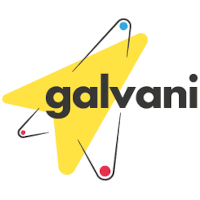
26 Feb Postdoc/Phd – Qualification of Immediate Impact of tDCS on Brain Activity
Context
The GALVANI project (https://www.galvani-lab.eu/) is a European research project (ERC SYNERGY 2020) aiming at developing non-invasive brain transcranial current stimulation (tCS) in epilepsy. Cumulated prevalence of epilepsy is 3% and about one-third of patients are drug resistant. This situation leads to major handicaps and comorbidities. In focal DRE, epilepsy surgery may be indicated if a focal resection is possible, a decision often taken after invasive EEG recordings (Stereo-EEG, SEEG). However, epilepsy surgery is possible in only 20% of DRE patients and is facing a certain number of failures. In this context, tCS is a promising tool in patients with drug resistant epilepsy (DRE). Still, it is not yet indicated as a standard treatment due to major scientific limitations: unknown mechanisms of action, insufficient account for patient-specific factors, poor understanding of short- and long-term effects. The ambition of the GALVANI project is to transform the care of a large fraction of patients living with drug-resistant epilepsies by solving a fundamental problem: to efficiently target and control large-scale epileptic brain networks with tCS-induced neuromodulatory weak electric fields.
Scientific Environment
GALVANI involves three partners: LTSI-Inserm (Rennes), AMU-APHP (Marseille) and Neuroelectrics (Barcelona). It is intended to develop the next generation of brain stimulation solutions. GALVANI can be viewed as a distributed lab (Rennes-Barcelona-Marseille) working under a common policy to ensure coherence of research and intense collaboration and cross-fertilization. Fellows will be co-supervised in a unique, shared environment with exposure to science, technology and clinical experience
Within the GALVANI project, the Marseille team is specialized in the management of epilepsy at Timone Hospital in the Epileptology and Cerebral Rhythmology department (Head Prof. F Bartolomei) with a strong expertise in SEEG explorations. The hospital department houses a research team from the Institut de Neurosciences des Systèmes (INS, INSERM AMU 1106, DYNAMAP team, dir C. Benar, https://ins-amu.fr/dynamap) specialized in the analysis of electrophysiological signals (SEEG, MEG, EEG).
We are looking for several candidates (PhD or Postdocs) that can complement and extend the DYNAMAP team’s expertise in the GALVANI Research project.
Contacts:
Christian Bénar (christian.benar@univ-amu.fr)
Fabrice Bartolomei (Fabrice.Bartolomei@ap-hm.fr)
Position 2: Post-doc/PhD “Quantification of immediate impact of tDCS on brain activity” (3y)
Planned recruitment: Sept 2020
Rationale:
The actual impact of brain stimulation on brain activity is poorly known. Intracerebral EEG performed in patients during presurgical evaluation of epilepsy give a formidable opportunity for measuring this impact directly within brain tissues.
Objectives:
Perform tCS in patients with simultaneous recording of intracerebral stereotaxic EEG (SEEG) within a research protocol to be submitted to ethical committee. Measure the impact of stimulation on brain signals thanks to signal processing metrics.
Methods:
SEEG signals will be acquired continuously during stimulation, with periods of rest. The signals during and directly after stimulation will be compared to signals before stimulation (baseline) thanks to the methods developed within Project 1 (local and network measures). Artefact subtraction methods will be applied to the SEEG signals in order to remove the influence of stimulation.
Required skills:
Electrophysiology recording and analysis, epilepsy, signal processing, programming in Matlab or Python. Good capacities to work in a team.
Please click here to learn more.


Sorry, the comment form is closed at this time.